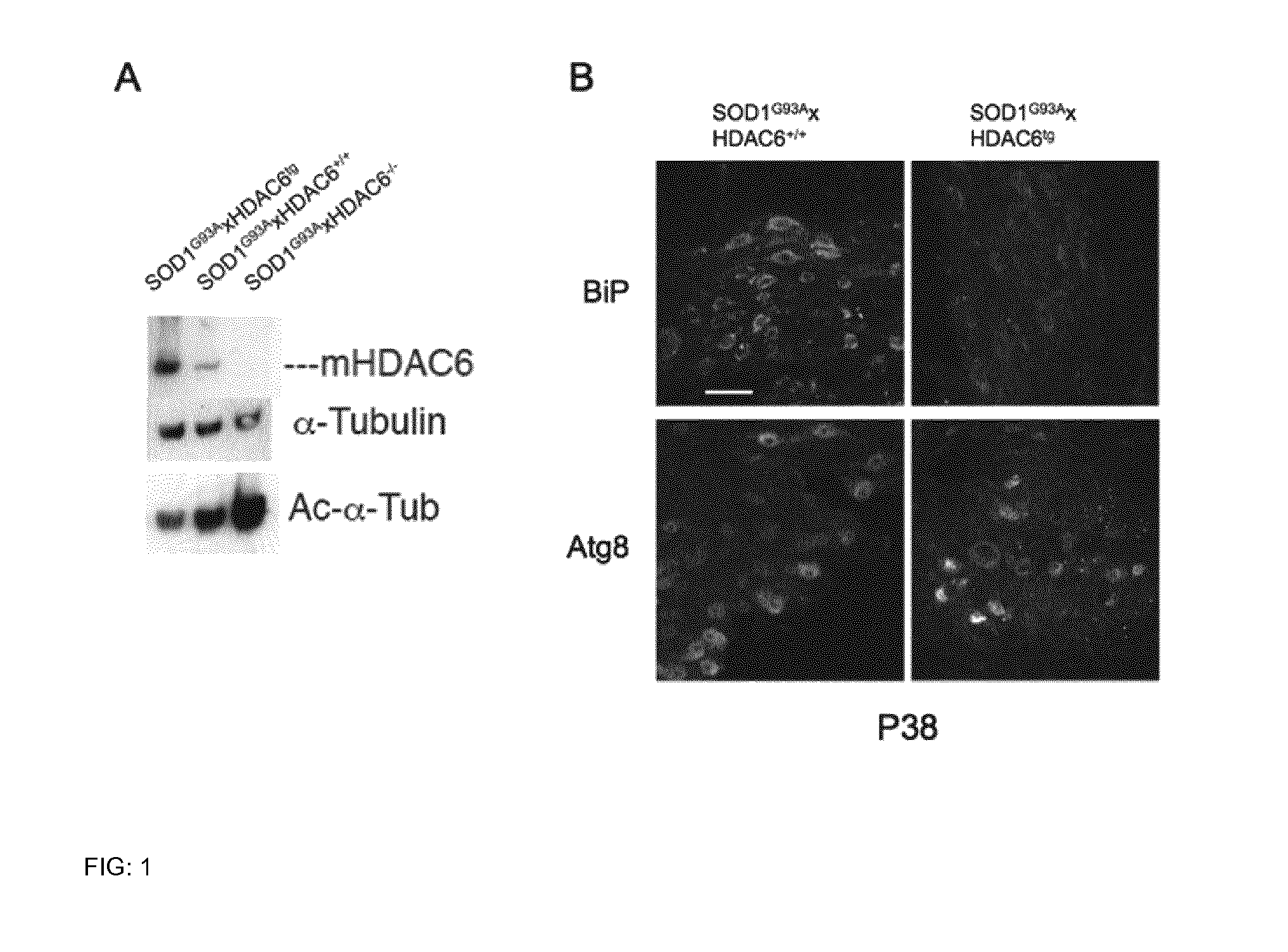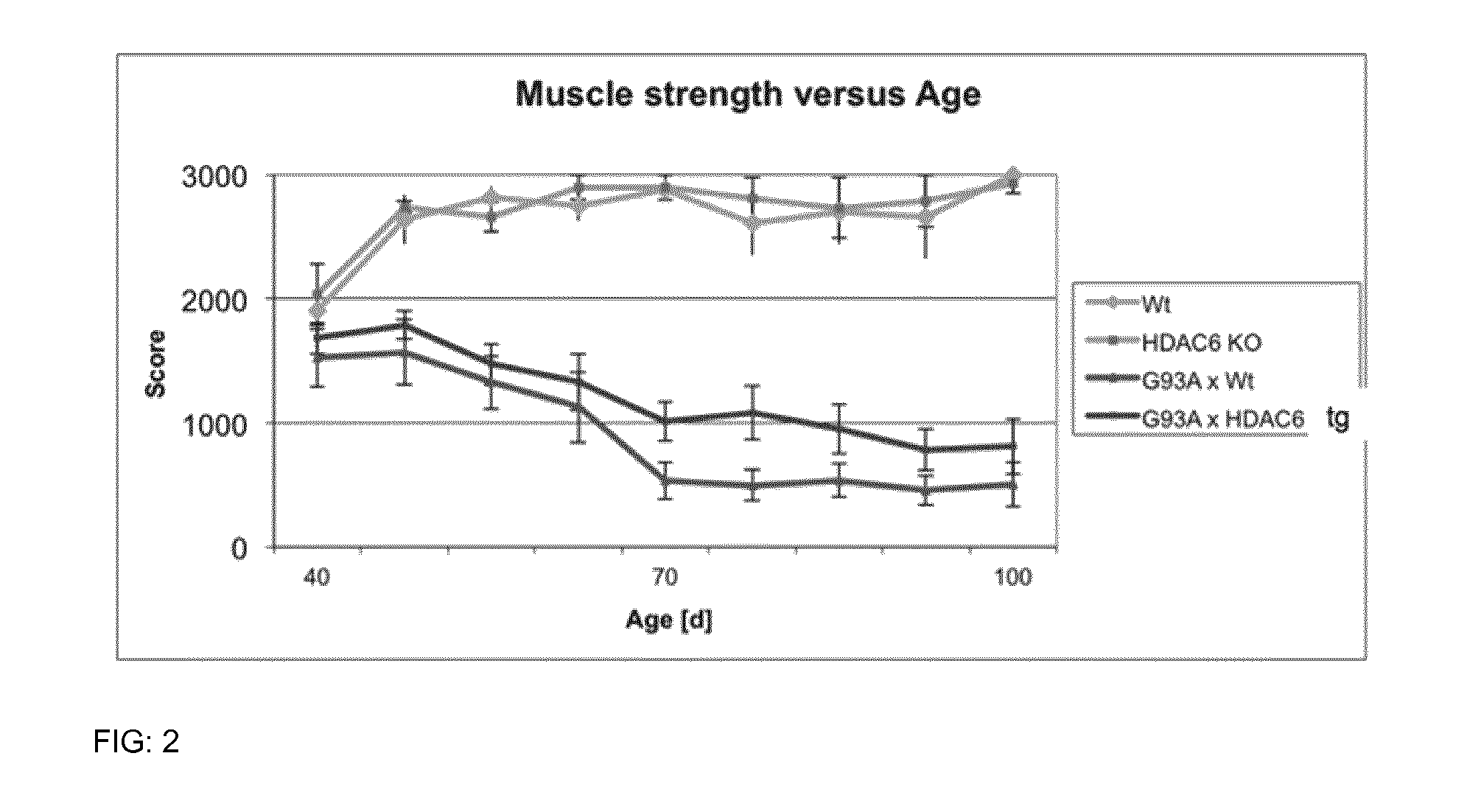New treatment for neurodegenerative diseases
a neurodegenerative disease and new treatment technology, applied in the field of neurodegenerative diseases, can solve the problems of disease progression, inability to translate biochemical and cellular studies observations into models, and no impact, so as to improve the degenerative phenotype, reduce autophagy, and strengthen the unfolded protein response.
- Summary
- Abstract
- Description
- Claims
- Application Information
AI Technical Summary
Benefits of technology
Problems solved by technology
Method used
Image
Examples
examples
[0106]Mouse lines: HDAC6 Knockout mice were generated in the inventor's laboratory (Zhang, Kwon et al. 2008) and kept under standard conditions. HDAC6 BAC transgenic mice were generated by pronuclear injection of a bacterial artificial chromosome encoding the mouse HDAC6 gene (clone 50M7, Means et al, 2000). G93A mice (B6.Cg-Tg(SOD1*G93A)1Gur / J; obtained from the Jackson Laboratories and provided by P. Caroni, FMI) were crossbred with either HDAC6 Knockout or BAC mice. For all analyses, wild-type mice of the same sex were used as controls. Animal experimentation was carried out according to regulations effective in the canton of Basel-Stadt, Switzerland. All experimental procedures were approved by the Animal Committee of FMI, and the Veterinary office of Basel. The mice were housed in groups of one to six animals at 25° C. with a 12-h light-dark cycle (12 h light, 12 h dark). They were fed a standard laboratory diet containing 0.8% phosphorus and 1.1% calcium (NAFAG 890; Kliba, Bas...
PUM
 Login to View More
Login to View More Abstract
Description
Claims
Application Information
 Login to View More
Login to View More - R&D
- Intellectual Property
- Life Sciences
- Materials
- Tech Scout
- Unparalleled Data Quality
- Higher Quality Content
- 60% Fewer Hallucinations
Browse by: Latest US Patents, China's latest patents, Technical Efficacy Thesaurus, Application Domain, Technology Topic, Popular Technical Reports.
© 2025 PatSnap. All rights reserved.Legal|Privacy policy|Modern Slavery Act Transparency Statement|Sitemap|About US| Contact US: help@patsnap.com


